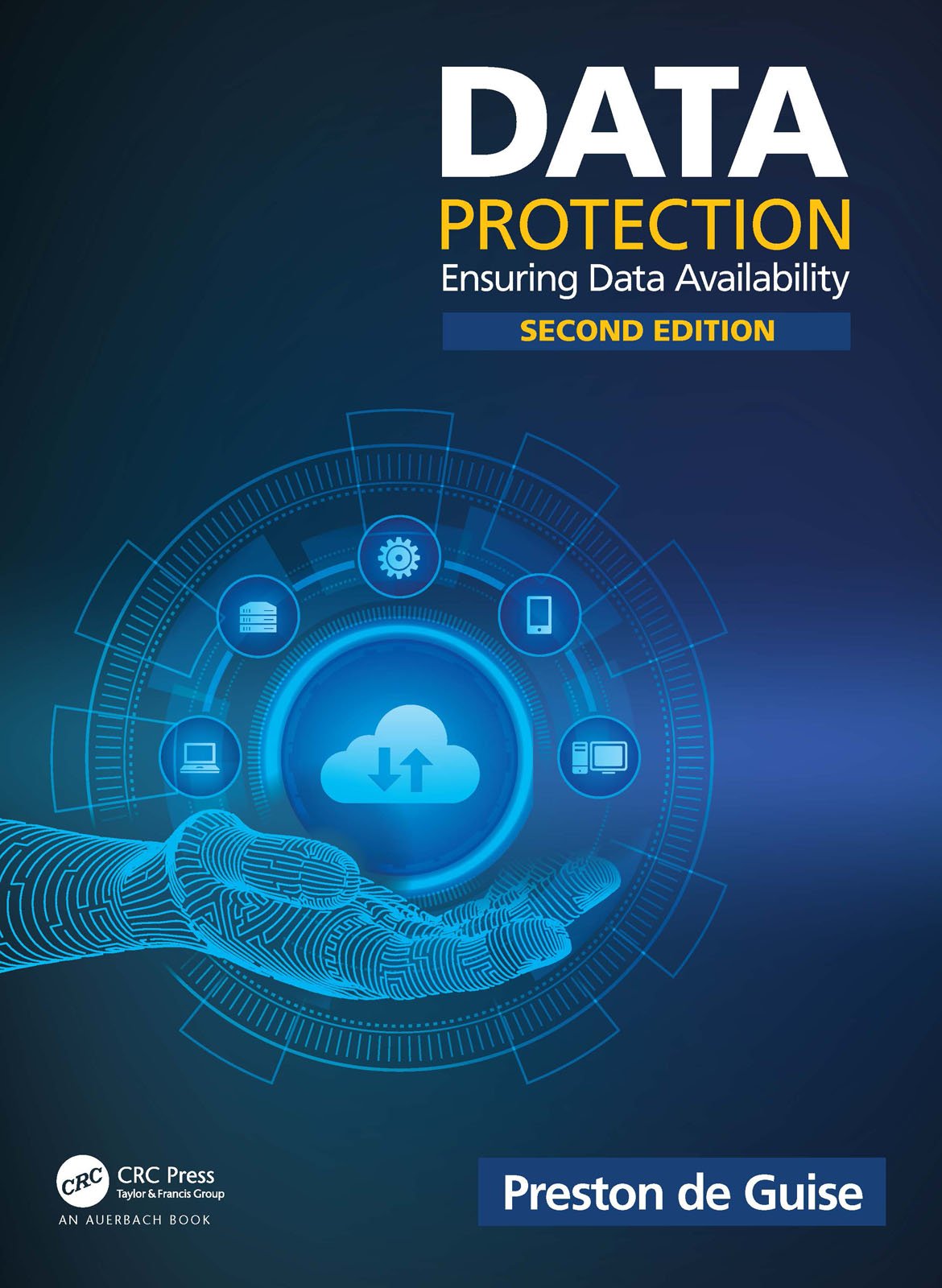Over the last year or so, I’ve been working on a project that’s very dear to me: creating an updated and expanded release of Data Protection: Ensuring Data Availability. I’m proud to say, the eBook was released 1 May, and the print editions are due to be released 20 May. (Print editions, because it’s being released in paperback and hardcover.)
You can either get the digital edition or order the print edition from a variety of places, including CRC Press, Barnes & Noble, Kinokuniya, Booktopia, Readings, and Amazon.
The Second Edition is a substantial update: an increase of approximately 85,000 words in this new release. There are also more than double the number of diagrams, and the print dimensions were adjusted to suit the increased size.
Here’s the chapter list from the new edition:
- Introduction
- Contextualizing Data Protection
- Data Lifecycle
- Elements of a Protection System
- IT Governance and Data Protection
- Monitoring and Reporting
- Business Continuity
- Data Discovery
- Security, Privacy, Ethical, and Legal Considerations
- Continuous Availability, Replication, and CDP
- Snapshots
- Backup and Recovery
- Deduplication
- The Cloud
- Protecting Virtual Infrastructure
- Big Data
- Protecting the Edge
- Data Storage Fault Tolerance
- Tape
- Converged Infrastructure
- Data Protection Service Catalogs
- Holistic Data Protection Strategies
- Making Data Protection Smarter
- Data Recovery
- Long-Term Retention Considerations
- Choosing Protection Infrastructure
- The Impact of Flash on Data Protection
- In Closing
Most chapters also come with some self-reflection options — if you’re coming at data protection as a new discipline, they’ll give you the opportunity to review what the chapter has covered, and one of the appendices runs through the self-reflection questions, too.
Some of The New Topics
The first edition was published in early 2017, but since then it occurred to me that several topics needed to be added to an updated version, including:
Re-thinking Data Protection Architecture
Data protection is about providing resilience, but it’s still all too easy to think of resilience in specific functional silos. That might happen either in terms of individual business projects, or specific infrastructure stacks (network, compute and storage in particular). I wanted to present a cohesive model that focuses on four key areas to ensure resilience, and press the need for that to be a fundamental building block of data protection. I.e., data protection is more than just a project-by-project process.
Long-term retention
Data protection systems focus on short-term, operational recovery, but it’s often long-term retention where the bulk of your data protection copies reside. That deserves focused attention.
Legal considerations
IT departments and entire businesses – particularly those that don’t operate within strongly regulated industry verticals often struggle coming to grips with what their legal requirements are around data retention. I’m not a lawyer of course, so I’m certainly not giving legal advice, but what I do cover are some of the things I’ve learnt about investigating and planning data protection options. Whether you think it or not, there’s usually legalities involved in data protection, and a few pointers can never go astray here.
Security, privacy and ethical concerns
It’s kind of ironic that every time I use the hashtag #DataProtection on Twitter, I get retweeted by a bunch of security bot-accounts. That’s fine, I don’t mind the amplification, but it’s always been the case that “data protection” means different things to different people. Security has always grabbed some of that attention, and increasingly, privacy is as well. I frequently feel that IT as a discipline doesn’t spend enough time thinking through the ethics of what we do, so it seemed a good opportunity to explore all of these concerns.
The Edge
There’s a lot at the edge, and the edge has always been there in business, whether we’ve explicitly called it that or not. How do you approach data protection from an IoT perspective? More than IoT though, the ‘edge’ has always contained remote servers, user laptops and desktops, and other functionality that sits well away from infrastructure-rich datacentres. Anything sitting at the edge poses challenges in data protection, yet we’d be remiss to ignore it as its importance grows in business.
Smart Data Protection
If left unchallenged, “it’s always been done that way” is the worst possible thing you can say in business. It’s not just the amount of data to be protected which is increasing, it’s the number of systems. Dozens to hundreds of physical servers now provide thousands to tens of thousands of virtual machines. Of course, containers are certainly getting more traction too. How does a data protection administrator keep up with this? Automation is key. I’ve said it before and I’ll keep saying it: if there’s going to be a single defining focus of this decade in IT, it’s going to be automation. The key tenet around automation that I learnt in my first system administration team is now dominating the industry. If you have to do it more than once, automate it. So of course, it’s important to think through what might be involved in making data protection smarter.
Making Protection your Passion
If you’re here, reading this blog, it’s probably because you work in data protection. I’m here because I not only work in data protection, but I’m utterly passionate about data protection. (So much so that my idea of a dream job is to just work with and test data protection products all day, every day.) This blog is an extension of that passion, but the book is the exemplar of it. I hope you’ll be interested in reading it.
You can either get the digital edition or order the print edition from a variety of places, including CRC Press, Barnes & Noble, Kinokuniya, Booktopia, Readings, and Amazon.

Gratz on the second edition!!! Will get a copy for sure!!!